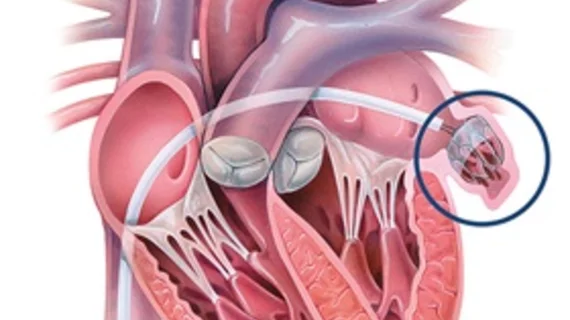Older LAAO patients, especially women, face a higher risk of complications
Older left atrial appendage occlusion (LAAO) patients may face a higher risk of in-hospital mortality or procedure-related complications, according to new research published in the American Journal of Cardiology.[1]
“The mean age in clinical trials of percutaneous LAAO has been below 75 years,” wrote first author Islam Shatla, MD, a specialist with the University of Missouri-Kansas City School of Medicine, and colleagues. “We aimed to better understand the safety of LAAO in older patients.”
Shatla et al. examined data from nearly 7,000 patients with AFib who underwent LAAO from January 2016 to December 2018. All data came from the National Inpatient Sample.
While 60.4% of patients were 75 years old or older, with a mean age of 81 years old, the remaining patients were all under the age of 75 and had a mean age of 68 years old. The average length of stay and hospitalization costs were not significantly different between older and younger LAAO patients.
Overall, the authors noted, cardiac perforation and cardiac tamponade after LAAO were more common among patients 75 years old or older (1.3%) than patients under the age of 75 (0.6%). This trend was still evident after a multivariate analysis.
The rates of patient death, hematoma, vascular complications, shock, cardiac arrest and stroke or transient ischemic attack were all comparable between older and younger LAAO patients. Shatla and colleagues did identify, however, a “trend toward greater combined in-hospital adverse events and mortality” among the patients 75 years old or older.
The study also uncovered a noteworthy difference between male and female LAAO patients.
“Our study expands on previous evidence elucidating gender-specific differences in the risk of invasive cardiac procedures,” the authors wrote. “After LAAO, we found that women had a nearly threefold higher risk of pericardial effusion and tamponade than men … Although difficult to ascertain the underlying reasons for this observed increased risk, differences in female cardiac anatomy, including smaller left atrial appendage orifices and reduced myocardial thickness, may be factors.”
Related Structural Heart Disease Content:
Same-day discharge after LAAO is safe, cost-effective and ‘could become the new standard’
FDA now investigating potential differences in LAAO outcomes among men and women
Half-dose DOAC improves outcomes after LAAO
LAAO with Watchman device consistently lowers stroke risk after 1 year
Reference:

